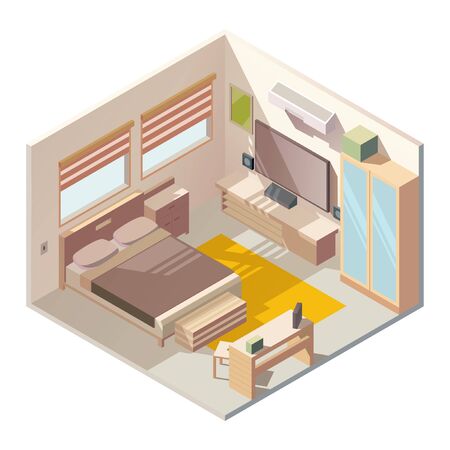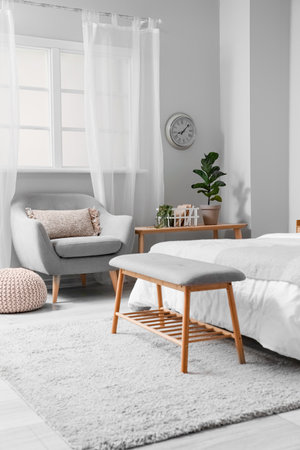1. Decluttering Your Closet: The First Step to Organization
Before you can create an organized and budget-friendly closet, the first step is decluttering. A clutter-free space makes it easier to find what you need and maximizes your available storage. Follow these simple steps to sort, categorize, and eliminate unnecessary items for a more efficient closet.
Sort Everything Out
Start by taking everything out of your closet. Lay all your clothes, shoes, and accessories on your bed or floor so you can see exactly what you own. This step helps you assess which items you actually use and which ones are just taking up space.
Categorize Your Items
Once everything is out, group similar items together. This makes it easier to decide what stays and what goes. Use the following categories to help with sorting:
| Category | Examples |
|---|---|
| Everyday Wear | T-shirts, jeans, casual dresses |
| Work & Formal Attire | Suits, blouses, dress shoes |
| Seasonal Clothing | Winter coats, swimsuits |
| Shoes & Accessories | Sneakers, scarves, handbags |
| “Maybe” Pile | Items youre unsure about keeping |
Purge Unnecessary Items
A good rule of thumb is to ask yourself: Have I worn this in the past year? If not, its time to let it go. Consider donating gently used clothing to local charities or selling them online for extra cash. Be honest with yourself—keeping unnecessary items only adds clutter.
The One-Year Rule
If an item hasn’t been worn in over a year and holds no sentimental value, its probably time to part ways with it. Exceptions can be made for special occasion outfits, but everyday clothing should be regularly reviewed.
Create a Donation or Sell Pile
Once youve decided what to remove from your closet, separate those items into two piles:
- Donation: Clothes in good condition that others may find useful.
- Sell: Higher-end or brand-name items that can earn some money through resale platforms like Poshmark or eBay.
By decluttering first, youll have a much clearer idea of how much storage space you actually need. This will make the next steps in organizing your closet both easier and more effective.
2. Affordable Storage Solutions: Maximizing Space on a Budget
Keeping your closet organized doesn’t have to be expensive. There are plenty of budget-friendly storage solutions that can help you maximize space without breaking the bank. By using smart organization tools, you can make the most of every inch in your closet and bedroom.
Hanging Organizers for Vertical Space
One of the best ways to utilize your closet space efficiently is by using hanging organizers. These are perfect for storing shoes, accessories, or folded clothes while keeping everything easily accessible.
Benefits of Hanging Organizers:
- Maximizes vertical space: Great for small closets with limited shelving.
- Easy to install: Simply hang them on your existing closet rod.
- Affordable and versatile: Available in various sizes and styles to fit different needs.
Modular Shelving for Customizable Storage
If you need a more flexible storage solution, modular shelving is an excellent option. These units allow you to customize your storage layout based on your available space and needs.
Comparison of Modular Shelving Options
| Shelving Type | Features | Best For |
|---|---|---|
| Cubby Storage Units | Great for organizing bins, baskets, and folded clothes. | Closets with extra floor space. |
| Stackable Shelves | Adds extra storage on existing shelves. | Small closets needing additional layers. |
| Tension Rod Shelves | No drilling required; expands vertical space. | Rental homes or temporary setups. |
Under-Bed Storage for Extra Space
If your closet is already full, consider utilizing the space under your bed. Under-bed storage containers are a great way to keep off-season clothes, shoes, or extra bedding neatly tucked away while remaining easily accessible.
Types of Under-Bed Storage:
- Slim plastic bins: Ideal for storing seasonal clothing or accessories.
- Zippered fabric bags: Protects items from dust and moisture.
- Shoe organizers: Keeps footwear neatly arranged under the bed.
No matter the size of your bedroom or budget, these affordable storage solutions can help you stay organized while making the most of your available space.

3. DIY Closet Hacks: Creative and Budget-Friendly Ideas
Organizing your closet doesn’t have to be expensive. With a little creativity and some repurposed household items, you can maximize your storage space without spending a fortune. Here are some easy DIY hacks to help keep your closet neat and functional.
Use Shower Curtain Rings for Accessories
Instead of buying special hangers for scarves, belts, or ties, use shower curtain rings attached to a regular hanger. Simply loop your accessories through the rings for an organized and space-saving solution.
Repurpose Shoe Boxes for Small Items
Shoe boxes make excellent organizers for socks, underwear, or small accessories. Cover them with decorative paper to match your style and label them for easy access.
Install Tension Rods for Extra Storage
Tension rods are inexpensive and can create additional hanging space in your closet. Use them to organize shoes, handbags, or even hang clothing items that don’t require a full-length rod.
Create a DIY Drawer Organizer
If your drawers are messy, cut cardboard pieces to create dividers. This simple trick helps keep smaller clothing items neatly separated and easy to find.
Use Baskets and Bins for Grouping Items
Baskets and bins are great for grouping similar items together. Whether its seasonal clothing, handbags, or workout gear, keeping these items in separate containers makes organization effortless.
DIY Closet Organization Hacks at a Glance
| Item | Repurposed Use |
|---|---|
| Shower Curtain Rings | Organize scarves, belts, and ties |
| Shoe Boxes | Store socks, underwear, and accessories |
| Tension Rods | Create extra hanging storage |
| Cardboard Dividers | Keep drawer contents organized |
| Baskets & Bins | Categorize seasonal or bulky items |
Think Outside the Box
You don’t need expensive organizing systems to maintain a tidy closet. Look around your home for unused items that can be repurposed into creative storage solutions. With these budget-friendly DIY hacks, you’ll have a more organized space without breaking the bank.
4. Smart Clothing Organization: Tips for a Tidy Wardrobe
Keeping your closet neat and organized doesn’t have to be complicated or expensive. By arranging your clothing strategically, you can make your daily routine smoother while keeping your wardrobe looking great. Here are some simple ways to organize your clothes effectively.
Sort Clothes by Season
One of the easiest ways to keep your closet tidy is by organizing your clothes based on the season. Store off-season items in bins or vacuum-sealed bags to free up space for the clothes you currently wear.
| Season | Storage Solution |
|---|---|
| Spring & Summer | Keep lightweight clothing accessible; store heavy coats and sweaters. |
| Fall & Winter | Rotate in warm layers and outerwear; pack away summer dresses and shorts. |
Organize by Color
A color-coordinated closet makes finding outfits easier and gives your wardrobe a visually appealing look. Arrange clothes from light to dark or group similar shades together for a cohesive system.
Categorize by Frequency of Use
If you frequently reach for certain clothing items, place them within easy reach. Store less-used or special occasion outfits higher up or toward the back of the closet.
Quick Organization Tips:
- Use clear bins: Easily see stored items without rummaging through boxes.
- Add dividers: Keep folded clothes neat and prevent piles from toppling over.
- Label storage areas: Clearly mark shelves and bins for effortless organization.
A well-organized closet not only saves time but also maximizes space efficiently. Try these budget-friendly solutions to maintain a tidy and functional wardrobe all year round!
5. Maintaining an Organized Closet: Habits for Long-Term Success
Keeping your closet organized doesn’t have to be a one-time effort. By developing simple, easy-to-follow habits, you can maintain a neat and clutter-free space effortlessly. Here are some practical routines to help you stay on track.
Declutter Regularly
Set aside time every few months to go through your clothes and accessories. Donate or discard anything that no longer fits, is damaged, or hasn’t been worn in over a year. A good rule of thumb is the “one in, one out” method—if you buy something new, remove an old item.
Use a Daily Reset Routine
Spend just five minutes at the end of each day tidying up your closet. Hang up any clothes that were left out, return shoes to their designated spots, and fold any items that may have been tossed aside. A small daily effort prevents clutter from piling up.
Organize by Category
Grouping similar items together makes it easier to find what you need and keeps your closet looking tidy. Use the following organization structure:
| Category | Storage Method |
|---|---|
| Tops & Jackets | Hang on sturdy hangers |
| Pants & Skirts | Fold neatly or use pant hangers |
| Shoes | Store on shelves or in clear bins |
| Accessories | Use drawer organizers or hooks |
Label Storage Bins and Containers
If you use bins or baskets for seasonal clothing or accessories, label them clearly so you always know where things belong. This makes switching out seasonal wardrobes quick and hassle-free.
Adopt a Weekly Check-In Habit
Every weekend, take a moment to assess your closet’s condition. If you notice items out of place or unnecessary clutter building up, take a few minutes to reorganize before it becomes overwhelming.
Rotate Seasonal Clothing
Store off-season clothes in bins or vacuum-sealed bags to free up space. When the seasons change, swap them out so that only relevant clothing is easily accessible.
Create a Shopping Mindset for Sustainability
Avoid impulse purchases that add unnecessary clutter. Before buying new clothing, ask yourself if it’s something you truly need and if you have space for it in your closet.
By implementing these simple habits into your routine, maintaining an organized closet becomes second nature. Small daily and weekly efforts will ensure your space stays neat and functional without requiring major clean-ups.


